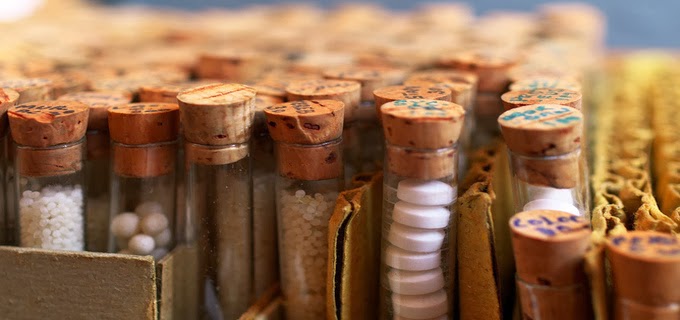The medicine Hydrastis is prepared from the roots of
orange tree. It is very important in the treatment of liver diseases. It is also
related to the skin and inner linings (mucous membranes). Amongst its superficial
symptoms, skin ulcers are
very conspicuous. When these ulcers change into cancer, and do not respond to any other
treatment, Hydrastis must not be forgotten. By the grace of God, Hydrastis is known
to control these dangerous kinds of ulcers growing out of hand.
Hydrastis is very effective against the deep-seated cancerous
masses and
chronic ulcers of the eye.
Honey is the best form of local treatment for these chronic ulcers. The local
application of pure honey two to three times a day will initially increase the
exudation of the fluid, following which the ulcers start to heal. Recent
research has shown that cancerous wounds that do not respond to any other medicines
are cured with local application of honey.
Being deeply related to the liver
diseases, Hydrastis affects the appetite. A very peculiar symptom is
that there is a feeling of strong craving and weakness while hungry, even
though there is intense dislike for food. However, there is no associated
nausea. These symptoms are also found in some other diseases, though in
slightly different form.
The cold in
a patient of Hydrastis is associated with constant presence of sticky
yellow thick exudates in the nose, which then dries up.
On picking the nose, the children develop sores, from which blood may ooze.
Hydrastis is the best remedy for these kinds of sores in the nose. The symptoms
of Hydrastis are relieved with rest. When the ailment aggravates, the face
shows signs of jaundice. It becomes yellowish. The eyelids
swell and sores develop on them (Blephritis). Thick
offensive smelling material forms in the ears
causing deafness.
While the patient with symptoms of nasal catarrh stays
inside the room, the nose stops running but the discomfort increases
when in the open again. Due to the extreme dislike for food a Hydrastis
patient has to live on milk, which he zealously drinks and can also
digest easily. The patient suffers from stiffness and cramping of
the muscles. Hydrastis is also useful in the treatment of chronic piles. There is a lot
of wind in the stomach. The urine
is scanty but offensive. The leucorrhoeal
discharge in women also smells foul. There is itching in the trachea
(windpipe) causing cough. In Hydrastis, like Phosphorus, even a gentle laugh
provokes severe coughing. In a patient
of Hydrastis, apart from the aching of the body and the legs, there is
increasing weakness, which improves on slow movement. In this regard, it
resembles Rhus Tox. Although, in Hydrastis rest gives general relief to the
patient however, gentle walking relieves his aches.
The feet of such a patient swell. The swelling or oedema due to
liver disorder usually affects the face and the abdomen before involving the
feet.
Hydrastis is in general a very effective remedy for the
old, frail and those who get tired easily. The patient remains depressed. He believes he is
going to die soon. In fact, he desires to be dead. He is both lazy and
cowardly. The pain over the
forehead is a prominent symptom, which is often due to constipation.
There is pain over the head and in the muscles of the neck. A streak of eczema forms along the
hairline over the forehead.
The patient remains constipated.
There is pain over the lower
part of the abdomen, which becomes worse after defaecation. The stomach
aches. Digestion becomes poor. The taste in the mouth is bitter and the tongue
becomes whitish. In women, there is a tendency towards the formation of lumps in the
breasts, and if these lumps persist for a long time, they can transform into
cancer. After the periods finish the discharge increases, leading to the
formation of ulcers over the
cervix associated with severe itching. Hydrastis is also useful in smallpox.
It ameliorates its symptoms, shortens its duration and minimizes the potential
bad aftereffects.





